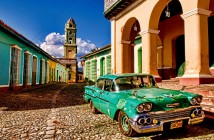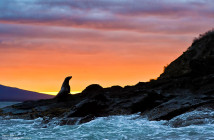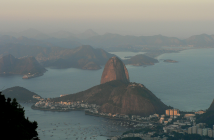Patagonia is a natural region located in southern South America, expanding through Argentina and Chile. With its beautiful landscape, Patagonia is often featured in media around the world. However, beauty is not all the land is known for.
The Chinese have built a research base in the region. With a 35 metre high antenna, the base is set to conduct space research. However, this is shrouded in mystery. Patagonia is a haven for scientific exploration. On the Chilean side, scientific expeditions are at the forefront.
The theory is that South American and Antarctica were once connected about 68 million years ago, at the end of the dinosaur era. At this time, the frozen continent we know today was not yet covered by ice, but by forests.
In 2014, the first fossilised leaves of Nothofagus were found in Cerro Guido. This genus of vegetation was confined to Antarctica, and can only be spread by land.
Scientists thereby came to the conclusion that there was a land connection between the two continents for over 85 million years, which allowed the development of some species of marsupials and plants. However, confirmation needs to be established. The Chilean Antarctic Institution (Inach) is leading this effort.
Patagonia is the area with the most glaciers outside of the polar areas. Just last week, a glacier ice arch collapsed on the Argentinian side.
Patagonia has a variety of landscapes,including cold and dry deserts,forests and pine forests, valleys and rivers, mountains and glaciers. The region dazzles with beautiful scenes and the mountains are the joy of climbers and skiers and all those who like adventure.
The announcement that China is building its third and “most modern interplanetary station and the first outside of its own territory” moved the media from around the world. The new base will be on the Argentine side of Patagonia, and ‘Space Station Far’ is set to begin operation at the end of 2016. However, the base is surrounded by mystery, controversy, and suspicion.
Skeptics fear that it may have a possible military use, and point to the existence of secret clauses in the contract that allowed the construction. Martin Dinatale, a journalist at La Nacion writes that the base depends on the Chinese People’s Army.
However, Argentina’s space authorities, speaking to BBC World, denied entirely that such clauses exist, though analysts and journalists who have investigated the matter say otherwise. The Argentine Foreign Ministry have not issued any statements.
The collapse of the glacier Perito Moreno, a UNESCO World Heritage Site, in Los Glaciares National Park, in the Argentinian side of Patagonia was truly a spectacle of nature. Thousands of tourists witnessed this natural phenomenon, which occurs only ever two to four years, although between 1988 and 2004 it did not occur.
According to scientists, glacial collapse occurs when the glacier and mountains collide, so that the water flowing ends up being dammed. Gradually, the water exerts pressure below the glacier until it destroys the dam and the ice bridge collapses. As the only glacier in Argentina which is accessible by vehicle, tourists, scientists, and news crews were able to record the final break.
Last month, the Argentine side of Patagonia also uncovered an ancient mystery. A team of Argentine archaeologists reported the discovery of a deposit of fossils on February 28, dating from the Jurassic Era, between 140 and 160 million years ago.
The archaeological site was discovered four years ago in the north-central province of Santa Cruz (Southern Argentina), but has only been revealed now. According to the team of scientists, the site has a wide range of micro and macro-organisms and could open the door to further new discoveries.
Such is the fascinating beauty of Patagonia, that Google Street View has announced plans to map Argentina Patagonia. From the second half of this year, internet users can visit the icy South American region through the interactive Google platform.
Patagonia is a region of the world that yearns to be discovered, and at the same time offers wonders to tourists. In the summer, visitors can go canoeing and windsurfing in the Nahuel Huapi lake waters, and the ski season attracts tourists from June to September .






1 Comment
Spot on with this write-up, I absolutely believe that this site needs much more attention. I’ll probably be back again to read more,
thanks for the info!